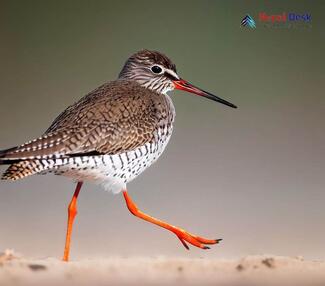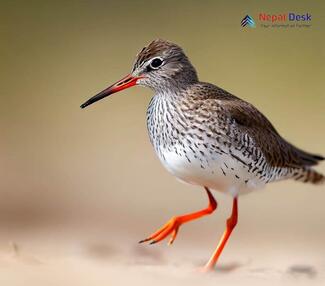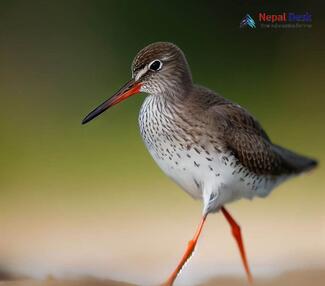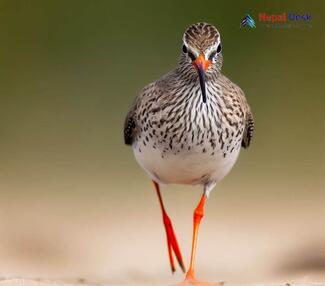Nepal, a land of diverse and picturesque landscapes, is not only famous for its mountain peaks and valleys but is also a haven for a myriad of bird species. One such captivating bird that calls this beautiful country home is the Common Redshank (Tringa totanus). Also simply called as Redshank, this bird is a Eurasian wader in the large family Scolopacidae. It was formally described by the Swedish naturalist Carl Linnaeus in 1758 In this article, we will introduce you to the world of Common Redshanks in Nepal, providing insights into their unique features and why they are a sight worth beholding.
A Graceful Wader
The Common Redshank is a medium-sized wading bird found predominantly in wetlands and along marshy coastlines. They can be easily recognized by their striking appearance—slender, predominantly grey-brown upperparts with white underparts, bright red legs, and long bills. The name "Redshank" has been derived from their vivid red legs, which make them stand out among other waders.
Feeding Habits and Habitat
These enigmatic birds primarily feed on insects, crustaceans, worms, and small mollusks that reside in wetlands, mudflats, and marshes. With their long bills adept at probing the ground, they can conveniently extract small organisms from the soft mud. In addition to Nepal's wetlands, the Common Redshank can be found across Europe and Asia during breeding seasons.
An Impressive Communicator
One fascinating feature of the Common Redshank is its loud and distinctive warning call. It often acts as a sentinel for other water birds in the vicinity by producing high-pitched "tew-tew-tew" or "tewing" sounds when sensing danger. These vocalizations serve as an alarm system for other birds in their habitat to evade potential threats.
Breeding Season and Social Behavior
During springtime, you may witness an impressive aerial display by these elegant birds as they court their mates. They are monogamous and prefer nesting on the ground in dense vegetation or grasslands. Once a suitable site is selected, the female lays around four eggs, which both parents take turns to incubate over a period of 24-29 days until they hatch.
Migration and Conservation
An interesting fact about the Common Redshank is that it's a migratory bird. Their populations breeding in Europe fly all the way to Africa during winter, crossing the Mediterranean Sea and the Sahara Desert en route. For the Redshanks that breed in Asia, like those found in Nepal, they are known to be partial migrants. This means that not all individuals migrate during winter, with some migrating short distances while others stay back in non-breeding territories like estuaries or saline lakes. The Common Redshank, although currently regarded as a species of least concern by the IUCN Red List, faces threats due to habitat loss caused by land use changes and increased disturbances near wetland areas.
In conclusion, the Common Redshank offers bird enthusiasts an opportunity to appreciate its unique features, social behavior, and fascinating life cycle while enjoying Nepal's picturesque landscape. To protect these alluring birds, it is vital that we continue to nurture and preserve their natural habitats for future generations to cherish.




